Pool valves are an essential part of your swimming pool’s plumbing system. They control the flow of water to and from different parts of your pool, such as the filtration system, heater, and any additional features like a spa or waterfall. Without properly functioning pool valves, it would be nearly impossible to keep your pool clean and maintain its ideal temperature.
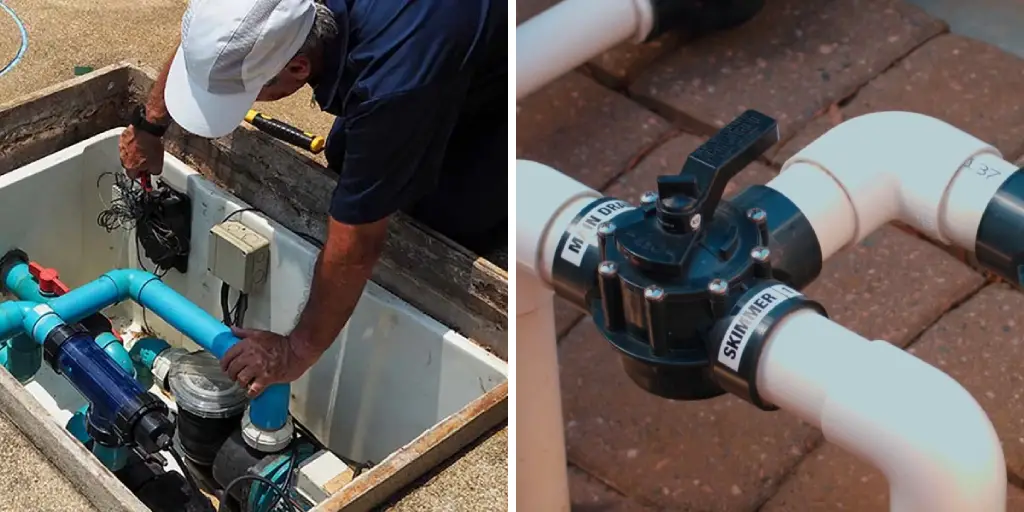
The main advantage of knowing to identify pool valves is being able to troubleshoot any issues that may arise with your pool’s plumbing. By knowing which valve controls which area of the pool, you can quickly pinpoint and fix any leaks or malfunctions.
This will save you time and money in the long run as hiring a professional to come out and identify the issue can be costly. You can find step-by-step instructions on how to identify pool valves in this blog article.
Step-by-step Instructions for How to Identify Pool Valves
Step 1: Inspect the Pool Equipment Pad
The first step in identifying pool valves is to locate the pool equipment pad. This is usually a concrete or plastic area near your pool that houses all of the pool equipment, including pumps, filters, and heaters.
Step 2: Look for a Valve Handle
Once you have located the equipment pad, look for a valve handle. Valves typically have a round or square handle that can be turned to open or close the valve. In some cases, there may be multiple valves on the equipment pad. These valves may control different functions of your pool, such as water flow or draining.
Step 3: Identify the Main Valve
The main valve controls the overall flow of water in and out of your pool. It is usually the largest valve on the equipment pad and is connected to the main water line. The skimmer valve controls the flow of water from the pool’s surface into the filtration system. It is usually a smaller valve located near the edge of the equipment pad.
Step 4: Find the Return Valve
The return valve controls the flow of water from the filtration system back into the pool. It is typically located near the skimmer valve on the equipment pad. If your pool has a drain, there will be a valve to control its function. This valve is usually found near the main valve on the equipment pad.
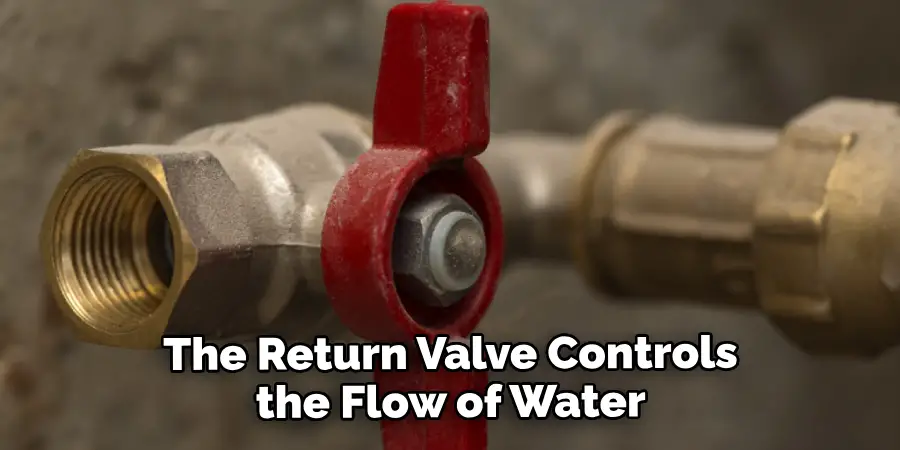
Step 5: Check for a Heater Valve
If your pool has a heater, there will be a valve to control the flow of water through it. This valve is typically located near the return valve on the equipment pad. Depending on the features and design of your pool, you may have additional valves for functions such as backwashing or adjusting water levels. These valves can usually be identified by their location on the equipment pad and their corresponding function.
Step 6: Test the Valves
To confirm your identification of pool valves, you can test each valve by turning the handle to see if it affects the flow of water. Be sure to turn off any electrical components to avoid damage while testing.
By following these step-by-step instructions, you can easily identify the pool valves on your equipment pad and understand their functions. This knowledge will come in handy when troubleshooting any issues with your pool’s plumbing system and save you time and money on repairs.
Tips for How to Identify Pool Valves
- Before attempting to locate and identify pool valves, it is important to read the instruction manual provided by the manufacturer. This will provide you with information on how your specific pool system works and where the valves are located.
- It is important to wear appropriate protective gear such as goggles, gloves, and closed-toe shoes when working with pool valves. This will protect you from any potential hazards such as chemicals or sharp edges.
- Always turn off the power to your pool system before attempting to locate and identify pool valves. This will prevent any accidents or shocks.
- Be cautious when handling pool valves, as they can be heavy and difficult to maneuver. Use proper lifting techniques and ask for assistance if needed.
- Use a diagram or map of your pool system to help identify the different valves and their functions. This will make the process easier and less confusing.
- Make sure to check the condition of each valve before attempting to turn them on or off. If a valve is damaged, it should be replaced before use.
- Regularly inspect and maintain pool valves to ensure they are functioning properly. This will help prevent any potential issues or malfunctions.
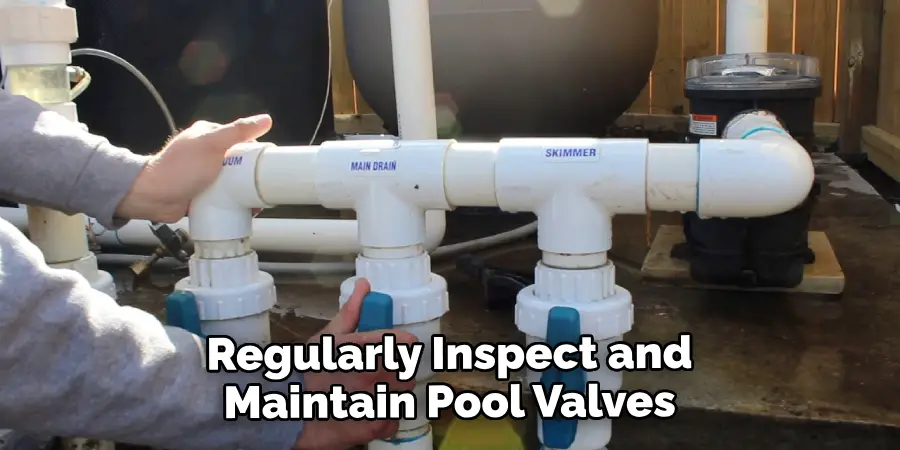
If you encounter a valve that is difficult to identify or seems to be malfunctioning, do not attempt to fix it yourself. Contact a professional for assistance.
Is It Necessary to Regularly Check and Maintain Pool Valves?
If you own a pool, then regular maintenance is essential to keep it clean and functioning properly. This includes checking and maintaining your pool valves. Pool valves play an important role in controlling the flow of water in and out of your pool.
They are usually located near the pump and filter system and are responsible for regulating water circulation, filtration, and drainage. Without proper functioning valves, your pool may not be able to operate efficiently and could potentially become a safety hazard.
1. Know the Different Types of Pool Valves
There are three main types of pool valves: ball valves, gate valves, and check valves. Ball valves have a lever handle that controls flow by rotating a ball within the valve body. Gate valves have a wheel handle that lifts or lowers a gate to control flow. Check valves allow water to flow in one direction only and prevent backflow.
2. Locate the Pool Valves
Pool valves are typically located near the pump and filter system, which is usually found on the side of the pool or in an equipment room. They can also be found along the plumbing lines leading to the pool.
3. Check for Labels or Markings
Most pool valves will have labels or markings that identify their function, such as “main drain,” “skimmer,” or “return.” These can be helpful in determining which valve controls what aspect of your pool’s water flow.
4. Test the Valves
Once you have located and identified the pool valves, it’s important to test them to ensure they are functioning properly. This can be done by turning the handle or wheel and observing if there is any change in water flow or pressure.
5. Regularly Inspect and Maintain Valves
To avoid any potential issues, it’s important to regularly inspect and maintain your pool valves. This includes checking for leaks, making sure they are properly closed or open, and cleaning them if necessary.
By following these steps, you can easily identify and maintain your pool valves to ensure they are working properly. Regularly checking and maintaining your pool valves will not only keep your pool running smoothly but also help prevent any potential safety hazards.
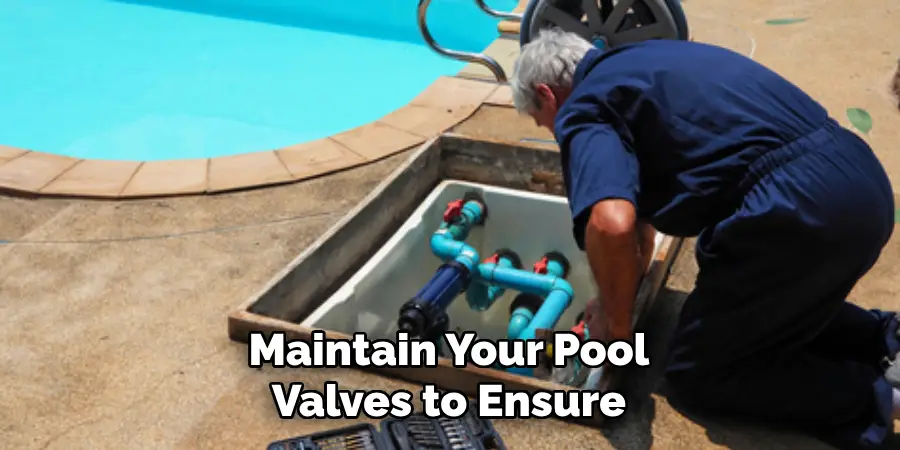
Are There Any Potential Hazards Associated With Pool Valves That Should Be Considered When Identifying Them?
While pool valves are essential in maintaining the proper functioning of your pool, they can also pose potential hazards if not identified and maintained correctly. These hazards can include:
- Backflow: If check valves are not installed or maintained properly, it can lead to backflow of water into your pool. This can cause contamination and potentially harm swimmers.
- Leaks: Pool valves can develop leaks over time, which can lead to water waste and damage to surrounding equipment.
- Incorrect Water Flow: If pool valves are not identified correctly, it could result in the wrong amount of water flowing through certain areas of your pool. This can affect the overall cleanliness and circulation of your pool.
- Improper Maintenance: Without regular maintenance, pool valves can become clogged with debris or become stuck, which can affect water flow and put unnecessary strain on your pool’s equipment.
It is important to be aware of these potential hazards when identifying and maintaining your pool valves. By properly identifying them and regularly performing maintenance, you can help ensure the safety and functionality of your pool for years to come.
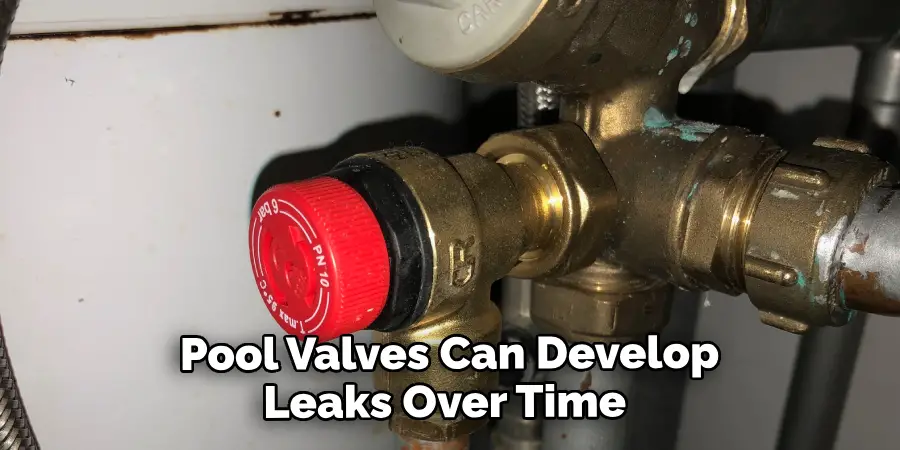
Conclusion
In conclusion, it is important for pool owners to be able to identify pool valves in order to properly maintain and troubleshoot their pools. By understanding the different types of pool valves, their functions, and how they are labeled, pool owners can easily locate and operate them as needed.
It is also crucial to regularly check and clean the pool valves to prevent any potential issues that may arise from clogs or damage. Additionally, knowing the location of pool valves can help in emergency situations, such as a leak or equipment malfunction.
By following these simple steps and remaining diligent in pool valve maintenance, pool owners can ensure a healthy and functioning pool for years to come. I hope this article has been beneficial for learning how to identify pool valves. Make Sure the precautionary measures are followed chronologically.

